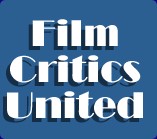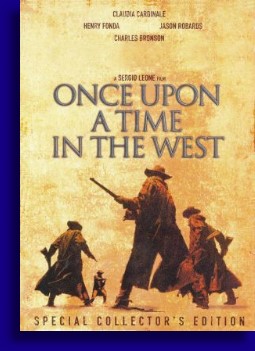

Reviewed by
Christopher Armstead


One would think that the easiest movie to pull off, entertainment speaking, would be a western. The base narrative in a western rarely changes and even in this movie ‘Once Upon a Time in the West’ often argued as the greatest western ever committed to film... some would argue that it is the best movie ever put to film... has a very basic narrative structure featuring a mysterious man riding into town to put down a terrible person who would do harm to those who can’t protect themselves. In addition to the narrative structure being laid out for the potential western filmmaker, thanks to the likes of Ford and Leone and their brethren, the form, function and style have been laid in stone as well. One would think, at this point and time, making a decent western is almost plug and play but one would think wrong. There are some modern westerns which do succeed but very few on the level of the westerns of the past, say to the level of ‘Once Upon a Time in the West’.
Just so you know right off the bat, despite the fact I think that ‘Once Upon a Time in the West’ is a great movie, it’s not my favorite Sergio Leone Western, a mantle which is held by ‘A Fist Full of Dollars’. This movie is grand, and epic and sweeping in its portrayal but ‘A Fist Full of Dollars’ is raw, barren, empty, brutal… just the way I like ‘em. Probably not the best of the Leone westerns, but my favorite nonetheless. Just throwing that out there for disclosures sake.
Now this movie is damn near three hours long and one could argue that the director might’ve been a little self indulgent when creating his epic masterpiece as the camera often tends to linger during certain set pieces, almost to make sure that the audience realizes the beauty in the framing of what this director is giving you the privilege to witness. The story for this three hour film is fairly simple as conceived by the familiar names of Leone, Bertolucci and Argento. A woman, Jill McBain (Claudia Cardinale) comes into this dusty out of the way western town, eager to start her life with a man she met and married a few months back only to find the man and his family slaughtered. The culprit behind this massacre would be Frank… I don’t think Frank had a last name… and as played by the legendary Henry Fonda, Frank could very well



be the most bitterly evil man in the history of movies. The truth of the matter is there’s really nobody in this movie that you would want to take home to meet mom, including Cardinale’s Jill McBain, but they all look like Captain Kangaroo when paired against Frank with no last name. Frank hung this crime upon the head of the scurrilous never do well outlaw Cheyenne (Jason Robards) who takes great umbrage at being framed for this crime because while Cheyenne admits to having killed a man or two in his day, he would never kill a child.
The last corner of our little square is filled by the mysterious man who plays the harmonica (Charles Bronson) who we can clearly see is none to fond of Frank. Frank just wants to know what this cats relationship is to himself, information which Harmonica is not forthcoming with, which is literally driving Frank crazy. Harmonica hates this man so much that when other men try to kill Frank, Harmonica kills them because that privilege, when the time is right, belongs to him.
Deals are made, paths are crossed, enemies become allies and money changes hands… but eventually it has to come down to a couple of mean looking, weathered, hardened men staring at each other at close range, pistols at the ready, with only one of them walking away.
One of the things that drive ‘Once Upon a Time in the West’ is the mystery behind Harmonica and his hatred of Frank. It’s a secret kept under wraps until the bitter end, that is unless you have the two-disc DVD special edition which yells it out in large black print right there on the back of the box why harmonica has such hatred for Frank. Paramount… c’mon man.
As far as the film itself there is very little that I can add to the discussion that hasn’t been discussed during the forty plus years of this movies existence by people far more eloquent than I, but it is a visual masterpiece. Every single thing about this movie from a visual perspective, From Colli’s cinematography, to the costumes, to the set design, to the staging, to the framing is absolutely perfect. I was fortunate to see this movie on a large projector screen and every detail and every line on the weathered faces of our hardened characters literally pops off the screen.
The casting was also very special considering all the main actors were on top of their respective games, but I’m certain audiences in 1968 watching Mister Roberts kill children and sex up overdeveloped Italian chicks, while being an altogether unpleasant person, had to be a jolt the system. I think this was one of the first movies I saw Henry Fonda in, so all those other roles were the exception for me because Henry Fonda was first and foremost that bastard Frank whenever I saw him in anything.
So visually there are few films one can place above this one but is it really deserving of the praise it routinely receives as a great western and possibly one of the great movies of all time? Well… There’s really not three hours worth of prose to support three hours worth of running time in this movie. For instance the opening scene with Woody Strode and Jack Elam waiting for the train carrying the man with the Harmonica on board was beautifully shot, wonderfully framed and set the atmosphere and tone for this movie just perfectly. But did it really need to be as long as was? Really? That scene, like so many scenes in this movie, were self-indulgent and simply went on too long. It was beautiful to look at but how much visual symbolism can an audience tolerate before it is time to move on to the next scene? There’s raising the tension level and then there’s just dragging it out and I wasn’t always convinced it was the latter as opposed to the former.
But ‘Once Upon a Time in the West’ is still an amazing film like few movies before it or after, and it is something which should be experienced as opposed to just watched. The bigger the screen and the bigger the sound for full immersion is highly recommended.
